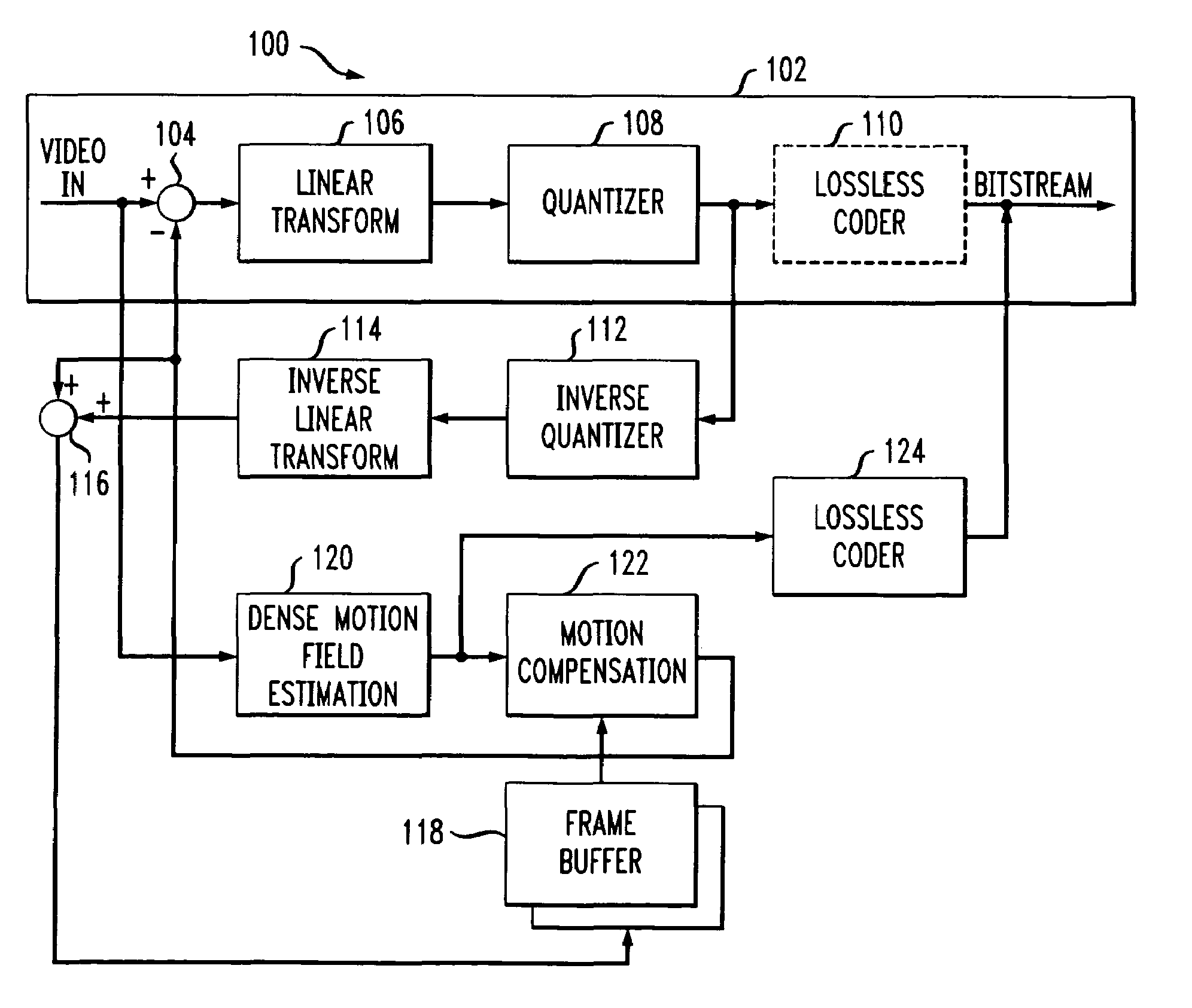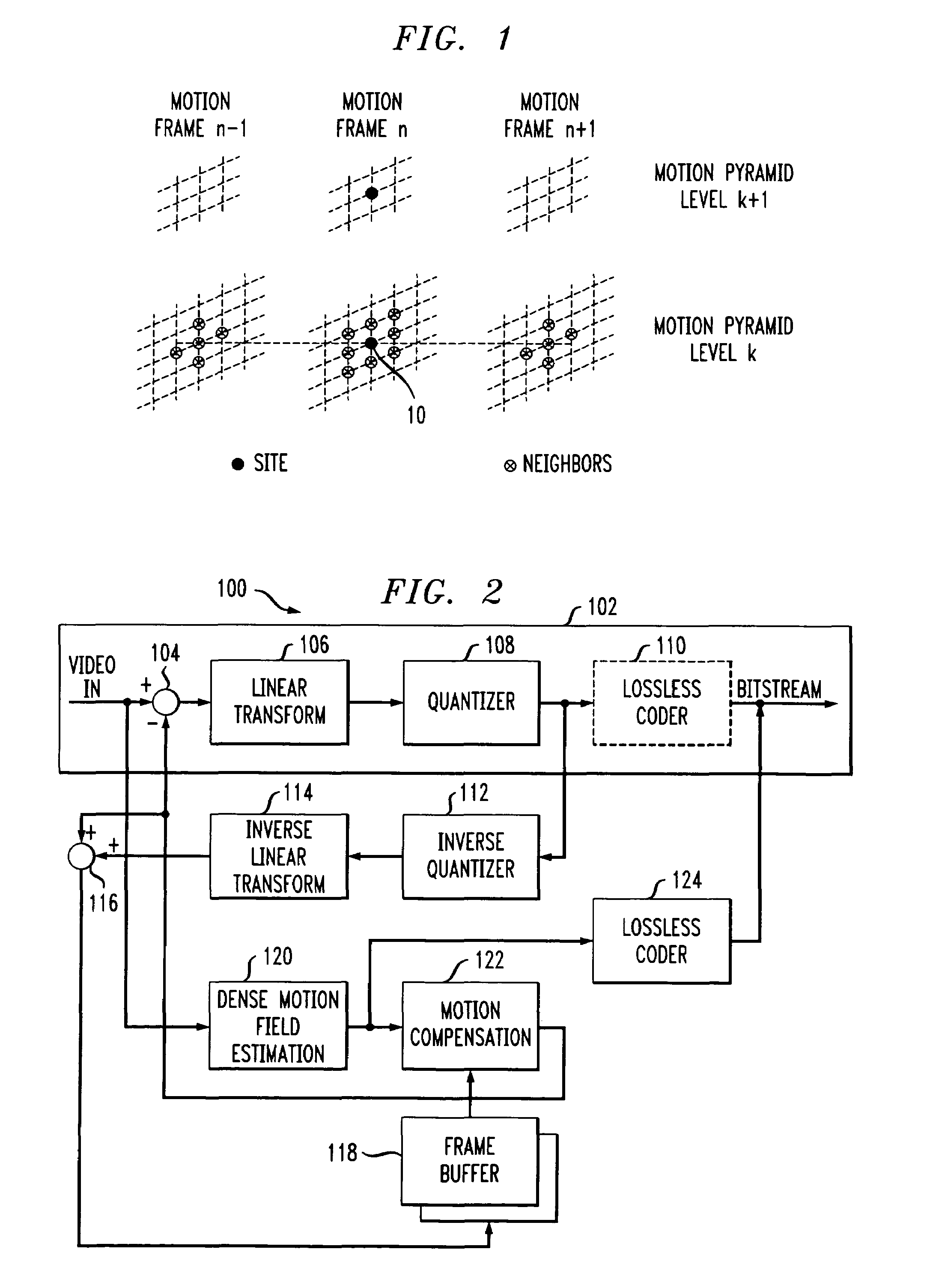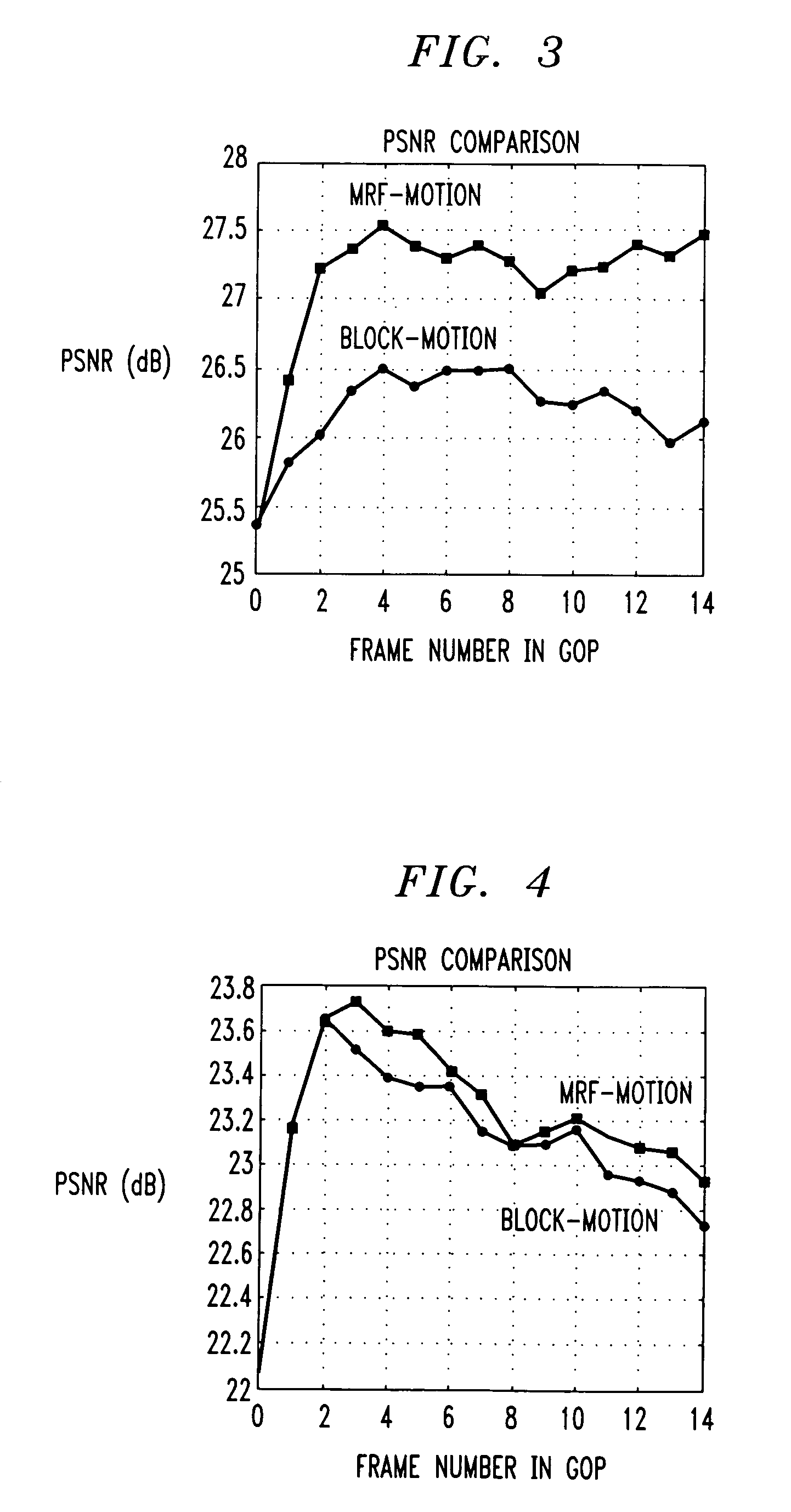Method and apparatus for dense motion field based coding
a motion field and motion field technology, applied in the field of motion estimation and compensation techniques, can solve the problems of increasing the bit rate required to encode this signal, increasing energy, and inaccuracy of compensation at the boundary of moving objects, so as to improve the quality of reconstructed images, improve performance, and eliminate certain blocking artifacts
- Summary
- Abstract
- Description
- Claims
- Application Information
AI Technical Summary
Benefits of technology
Problems solved by technology
Method used
Image
Examples
Embodiment Construction
[0015]The following description will illustrate the invention using an exemplary video encoder. It should be understood, however, that the invention is not limited to use with any particular type of signal format, encoding standard, encoder architecture or encoding system configuration. The invention is instead more generally applicable to any encoding application in which it is desirable to take advantage of temporal correlation between images. The term “image sequence” should be understood to include any frame sequence or other type of video sequence which is in a form suitable for encoding, e.g., suitable for encoding in accordance with standards such as H.261, H.263, Motion-JPEG, MPEG-1, MPEG-2, etc. The term “image” as used herein is therefore intended to include a frame or field of a video sequence.
[0016]The present invention provides image sequence encoding techniques which utilize motion estimation and compensation based on a dense motion field, rather than the block-based m...
PUM
 Login to View More
Login to View More Abstract
Description
Claims
Application Information
 Login to View More
Login to View More - R&D
- Intellectual Property
- Life Sciences
- Materials
- Tech Scout
- Unparalleled Data Quality
- Higher Quality Content
- 60% Fewer Hallucinations
Browse by: Latest US Patents, China's latest patents, Technical Efficacy Thesaurus, Application Domain, Technology Topic, Popular Technical Reports.
© 2025 PatSnap. All rights reserved.Legal|Privacy policy|Modern Slavery Act Transparency Statement|Sitemap|About US| Contact US: help@patsnap.com



